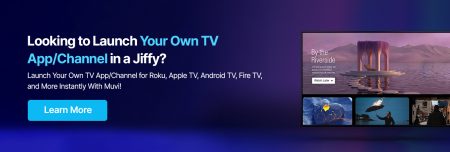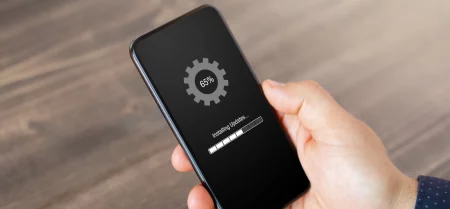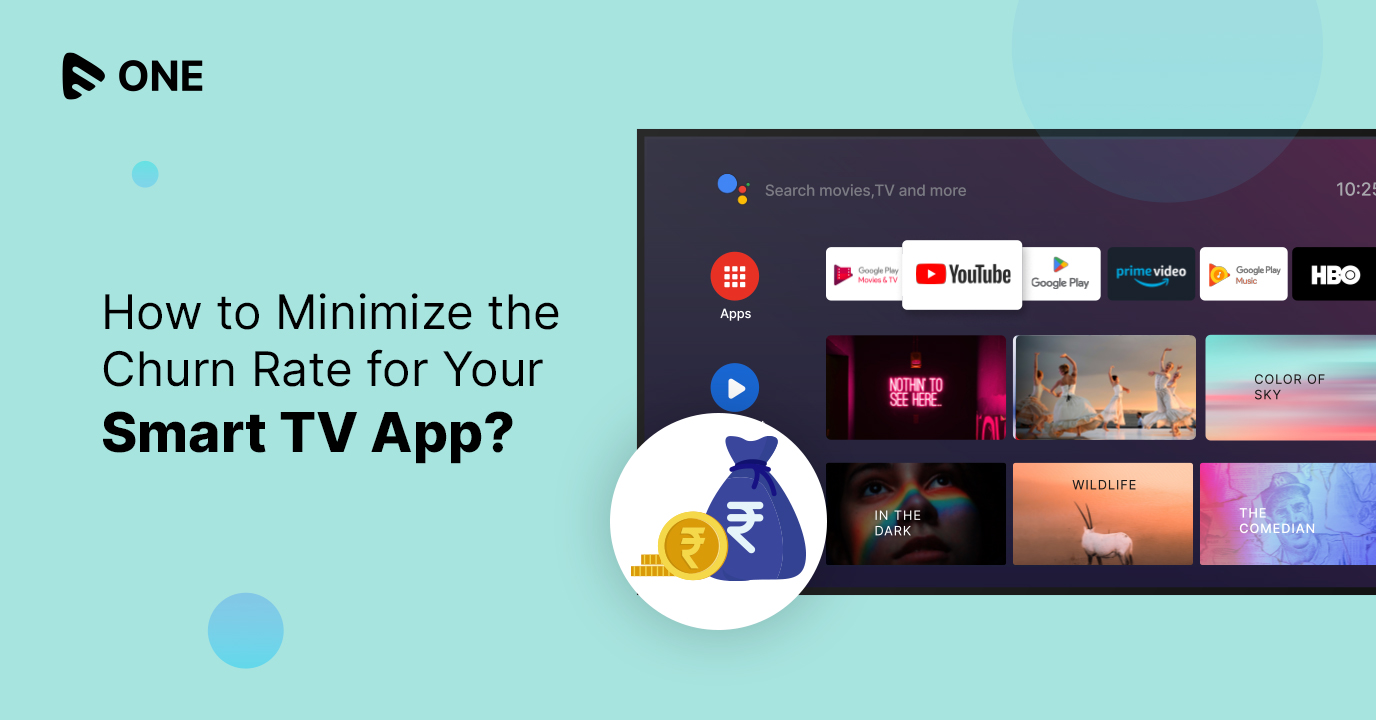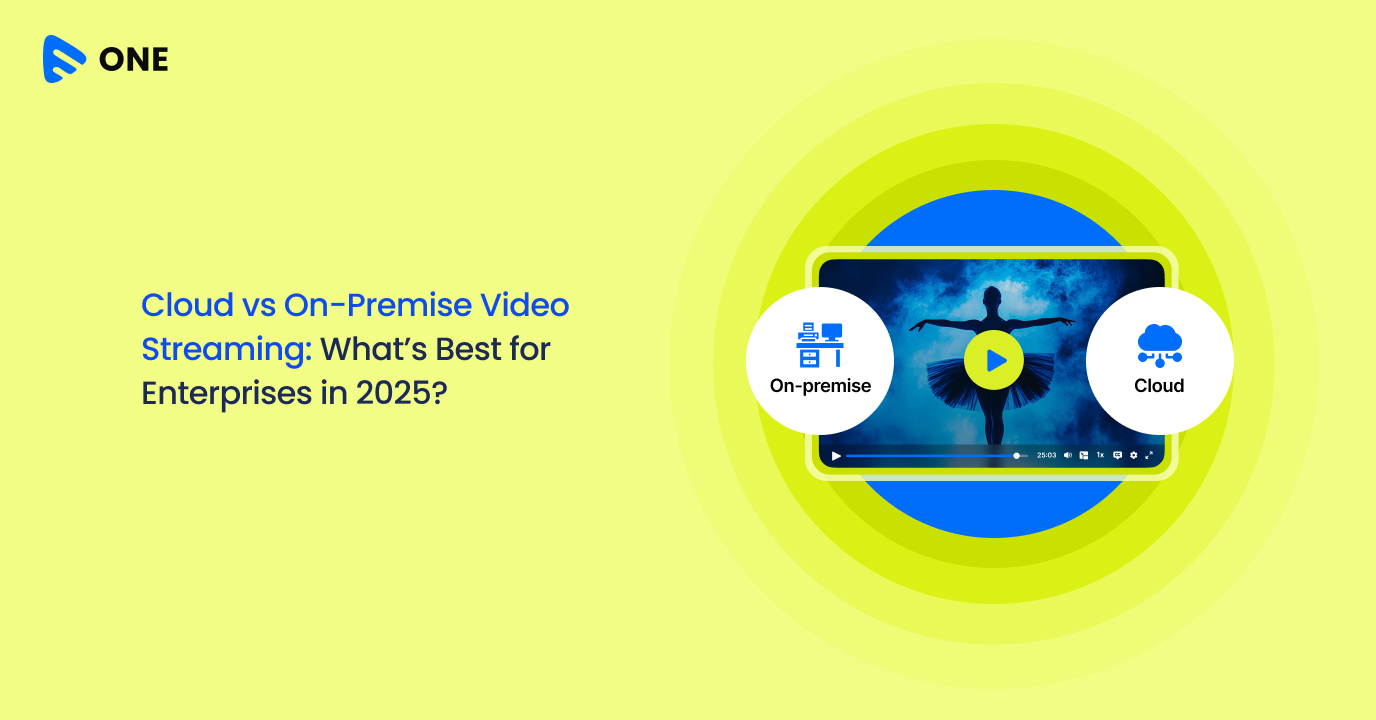Did you know, more than 3% churn rate is considered to be risky for your subscription-based business revenue?
And your smart TV app business is not an exception!
In this competitive smart TV market, retaining users and minimizing churn is essential for long-term success. With countless options available to viewers, it has become increasingly challenging to maintain user engagement and prevent them from switching to alternative apps.
However, by understanding the factors contributing to churn and implementing effective strategies, it is possible to mitigate this issue and cultivate a loyal user base. This blog explores actionable techniques and best practices to minimize the churn rate for your smart TV app.
By implementing these strategies, you can create a compelling and captivating smart TV app that not only attracts users but also encourages long-term loyalty, ultimately leading to sustained growth and success in the competitive smart TV app market. Now, let’s delve deeper to know more!
What Is the Churn Rate of a Smart TV App?
Churn rate refers to the rate at which users discontinue or stop using a smart TV app over a specific period of time. It is a critical metric that measures customer attrition and reflects the app’s ability to retain its user base.
Amidst the fierce competition of smart TV apps, minimizing the churn rate is essential for sustained growth and success. Understanding the factors influencing churn and implementing effective strategies to reduce it can help businesses create a loyal and engaged user community, leading to increased user retention and improved overall performance.
Strategies to Minimize the Churn Rate of a Smart TV App
Now let’s explore the top strategies that can help minimize the churn rate of a smart TV app.
1. Personalized Content Recommendations

Personalization plays a key role in keeping users engaged and interested in a smart TV app. By leveraging user data and preferences, businesses can provide tailored content recommendations that align with users’ interests.
To create custom recommendations based on user watch patterns and preferences, smart TV app developers can employ algorithms and machine learning techniques. Here’s how it works:
- Data Collection: Collect user data related to their viewing history, interactions, ratings, and preferences. This data can include the genres they watch, specific shows or movies they enjoy, their preferred language, and any explicit feedback they provide.
- Data Preprocessing: Clean and preprocess the collected data to handle missing values, remove duplicates, and normalize the data. This step ensures that the data is in a consistent format and ready for analysis.
- Collaborative Filtering: Collaborative filtering is a popular recommendation technique that analyzes user behavior to identify patterns and make recommendations. It works by comparing the user’s preferences with those of other similar users. If two users have similar viewing patterns or preferences, items that one user has enjoyed can be recommended to the other user.
- Content-Based Filtering: Content-based filtering recommends items similar to the ones a user has already shown interest in. It analyzes the content attributes, such as genre, actors, directors, and keywords, and identifies patterns to recommend similar items. For example, if a user frequently watches action movies, the algorithm can suggest other action movies based on common attributes.
- Hybrid Approaches: Hybrid approaches combine collaborative filtering and content-based filtering to provide more accurate recommendations. By leveraging both user behavior and content attributes, these approaches can provide a comprehensive and personalized recommendation system.
- Machine Learning Models: Machine learning models can be trained on historical user data to predict user preferences and generate recommendations. Techniques like logistic regression, decision trees, or neural networks can be used to learn from patterns in the data and make predictions.
- Real-Time Recommendations: As users continue to interact with the app, their preferences may change. By continuously analyzing user behavior and updating the recommendation models in real-time, the app can adapt and provide up-to-date recommendations that align with users’ evolving interests.
- A/B Testing: A/B testing can be conducted to evaluate the effectiveness of different recommendation algorithms or models. By randomly dividing users into different groups and comparing the performance of different recommendation strategies, developers can fine-tune their algorithms and optimize the recommendation system.
For instance, Netflix utilizes advanced algorithms to analyze viewing patterns and make personalized recommendations based on user history. This strategy not only enhances the user experience but also increases the likelihood of users finding content they enjoy, reducing the churn rate.
2. Seamless User Experience

A smooth and intuitive user experience is essential for retaining users. By focusing on usability and eliminating friction points, you can enhance user satisfaction and decrease the churn rate.
To achieve an enhanced user experience for a smart TV app, one can follow these key steps:
- Intuitive Navigation: Design the app with a clear and logical navigation structure. Use intuitive menus, labels, and icons to make it easy for users to find content and navigate through different sections of the app. Minimize the number of steps required to access desired features.
- Responsive Design: Ensure the app is optimized for various screen sizes and resolutions. Test the app on different smart TV models to ensure it adapts well to different display sizes and aspect ratios. This ensures that users have a consistent and visually pleasing experience across different devices.
- Fast Loading Times: Optimize the app’s performance to minimize loading times. Users expect quick and seamless access to content. Reduce unnecessary delays, optimize image and video loading, and utilize caching techniques to ensure the app loads swiftly and efficiently.
- Seamless Playback: Ensure smooth and uninterrupted playback of videos and other multimedia content. Minimize buffering times, optimize streaming quality, and provide options for adjusting video quality based on the user’s internet connection. A seamless playback experience enhances user satisfaction and reduces frustration.
- Responsive Customer Support: Offer prompt and responsive customer support channels, such as live chat or email, to address user queries, issues, or feedback. Actively listen to user concerns and provide timely assistance to enhance their overall experience and build customer loyalty.
- Regular Updates and Bug Fixes: Continuously improve the app by addressing user feedback, fixing bugs, and introducing new features. Regular updates show that you are actively working to enhance the app and address user needs, increasing their trust and satisfaction.
- User Testing and Feedback: Conduct user testing sessions and gather feedback to identify pain points, usability issues, and areas for improvement. Actively involve users in the development process to gain insights into their preferences, expectations, and challenges. Incorporate user feedback into iterative design and development cycles.
YouTube TV, for example, offers a user-friendly interface with easy navigation and quick access to favorite channels. By prioritizing a seamless user experience, YouTube TV ensures that users can easily find and enjoy their preferred content, increasing their likelihood of staying engaged with the app.

3. Value-Added Features and Benefits

Integrating value-added features and benefits can significantly contribute to reducing the churn rate of a smart TV app. By offering unique functionalities that go beyond basic content consumption, app providers can incentivize users to remain loyal.
Here are some examples of value-added features that can be integrated into a smart TV app:
- Behind-the-Scenes (BTS) Content: Offer users exclusive access to behind-the-scenes footage, interviews, and documentaries related to movies, TV shows, or events. This provides a deeper insight into the production process and enhances the overall viewing experience.
- Exclusive Live Footage: Provide users with access to live events, premieres, concerts, or sports matches that are exclusively available through the app. This gives users a sense of exclusivity and makes the app a go-to platform for unique live content.
- Deleted Scenes or Extended Cuts: Include deleted scenes, extended versions, or alternate endings of movies or TV shows that are not available elsewhere. This adds value for users who are passionate about the content and enjoy exploring additional or alternative footage.
- Early Access to Movies or Episodes: Offer users the opportunity to watch movies or episodes before they are officially released. This creates a sense of exclusivity and anticipation, making users feel rewarded for their loyalty to the app.
- Interactive Features: Introduce interactive features that allow users to engage with the content in a unique way. For example, interactive quizzes, polls, or games related to the shows or movies can provide an interactive and immersive viewing experience.
- Customizable User Profiles: Allow users to create personalized profiles with the ability to create watchlists, save favorite shows or movies, and receive tailored recommendations based on their viewing preferences. This enhances the user’s sense of ownership and provides a personalized experience.
- Offline Viewing: Enable users to download content for offline viewing, allowing them to watch their favorite shows or movies without an internet connection. This feature is particularly beneficial for users who travel or have limited internet access.
- Social Sharing and Discussion: Integrate social sharing functionalities that allow users to share their favorite content with their friends or on social media platforms directly from the app. Additionally, include features that enable users to participate in discussions, leave comments, or engage with other users who have similar interests.
Disney+ successfully incorporates value-added features, such as exclusive content, early access to movies, and offline downloads. These additional benefits create a sense of exclusivity and value for users, making it more compelling for them to continue using the app.
4. Continuous App Updates and Enhancements

Regular app updates and enhancements are crucial for maintaining user interest and addressing evolving needs. By actively listening to user feedback and implementing improvements, developers can demonstrate their commitment to providing a high-quality app experience.
Here are a few pointers to take care of –
- Improved Menu Accessibility: Ensure easy access to menus and features by organizing them in a logical and easily accessible manner. Simplify the menu structure, reduce the number of clicks required to access key features, and provide clear labels and icons to aid navigation.
- Enhanced Content Discovery: Implement features that help users discover new content based on their preferences. For example, introduce personalized recommendations prominently on the home screen, offer curated playlists, or highlight trending content. By providing relevant and engaging suggestions, users are more likely to stay engaged with the app.
- Customizable Settings: Allow users to customize certain aspects of the app to suit their preferences. This can include options to personalize the app’s appearance, adjust playback settings, enable/disable notifications, or choose preferred language and subtitles. Providing flexibility empowers users and enhances their overall experience.
- Enhanced Search Functionality: Improve the search feature by incorporating predictive text, auto-suggestions, and filters. Implement a robust search algorithm that delivers accurate results even with partial or misspelled queries. Additionally, consider integrating voice search capabilities to make the search process more convenient for users.
- Regular Bug Fixes and Performance Optimization: Continuously monitor and address any bugs, glitches, or performance issues that users may encounter. Regularly release app updates to fix these issues, improve stability, and optimize performance. This showcases a commitment to maintaining a high-quality app experience.
Spotify exemplifies this strategy by frequently updating their smart TV app, introducing new features, and addressing user requests. By continuously evolving and improving the app, Spotify keeps users engaged and less likely to churn in search of alternative options.
5. Data-Driven Insights and Continuous Optimization

Leveraging data analytics and insights is essential for understanding user behavior, preferences, and identifying areas for improvement. By continuously analyzing user data and making data-driven decisions, app providers can optimize their offerings, user experience, and reduce churn.
The process of achieving data-driven insights for a smart TV app involves several key steps:
- Data Collection: The first step is to collect relevant data from various sources. This can include user interactions with the app, such as app usage patterns, content consumption, preferences, and user feedback. Additionally, data from external sources like demographic information, market trends, and competitor analysis can also be valuable. Web scraping is an effective technique to gather this external data, allowing app developers to systematically collect information.
- Data Storage and Organization: Once the data is collected, it needs to be stored and organized in a structured manner. This typically involves using a database or a data warehouse where the data can be easily accessed and analyzed. Proper data governance practices should be followed to ensure data quality, security, and compliance with privacy regulations.
- Data Cleaning and Preparation: Raw data often contains inconsistencies, missing values, and errors. Therefore, data cleaning and preparation are crucial steps to ensure the data is accurate and suitable for analysis. This involves removing duplicates, handling missing values, standardizing data formats, and transforming data into a consistent structure.
- Data Analysis: In this stage, statistical techniques and data analysis tools are applied to extract meaningful insights from the collected data. Various analytical methods, such as descriptive statistics, regression analysis, clustering, and machine learning algorithms, can be used to uncover patterns, correlations, and trends within the data.
- Visualization and Reporting: Visualizations, such as charts, graphs, and dashboards, are used to present the analyzed data in a clear and concise manner. These visual representations help stakeholders understand the insights gained from the data analysis process. Reporting the findings to relevant teams, such as product managers, designers, and developers, is crucial for driving informed decision-making.
- Actionable Insights and Decision Making: The insights derived from data analysis should be translated into actionable recommendations. These recommendations can be used to make informed decisions regarding app improvements, feature enhancements, content recommendations, marketing strategies, and overall user experience enhancements. Data-driven decision making ensures that changes are based on evidence rather than assumptions.
- Continuous Monitoring and Iteration: The process of data analysis and decision making should be iterative and ongoing. Regularly monitoring user behavior, app performance, and market trends allows app providers to track the impact of their decisions and make necessary adjustments. This continuous feedback loop helps in refining the app and driving long-term success.
YouTube, for instance, utilizes data analytics to recommend relevant videos, improve search algorithms, and enhance the user experience. By harnessing the power of data, YouTube continuously optimizes its platform to cater to user preferences, minimizing churn.
To Conclude,
Minimizing the churn rate of a smart TV app is crucial for long-term success in the competitive landscape. By implementing the above strategies app providers can enhance user retention and satisfaction.
Additionally, leveraging a comprehensive platform provider like Muvi One can simplify the process of launching and growing your own branded smart TV app. With its extensive features and user-friendly interface, Muvi One empowers you to create a captivating smart TV app that stands out in the market, helping you establish a loyal user base and drive growth.
Sign up for a 14-day free trial of Muvi One today and unlock the full potential of your smart TV app.
FAQs
- What is a churn rate in the context of a Smart TV app?
Churn rate in the context of a Smart TV app refers to the rate at which users discontinue or stop using the app over a given period. It measures customer attrition and indicates the app’s ability to retain its user base.
- Why is it important to minimize the churn rate for a Smart TV app?
Minimizing the churn rate for a Smart TV app is important because it directly impacts user engagement, revenue, and overall app success. By reducing churn, app providers can retain their user base, increase customer loyalty, and maximize long-term profitability.
- What strategies can I use to minimize churn rate for my Smart TV app?
Strategies to minimize churn for a Smart TV app include improving the user experience by addressing usability issues, offering personalized content recommendations, providing timely customer support, implementing targeted marketing campaigns, and continuously enhancing app features based on user feedback. Regularly analyzing user data and proactively addressing pain points can also help increase user retention.
- How can I enhance the user experience to reduce churn rate?
Enhancing the user experience to reduce churn rate can be achieved by focusing on intuitive navigation, fast loading times, personalized content recommendations, seamless playback, responsive customer support, and regular updates that address user feedback. A user-friendly and enjoyable experience increases satisfaction and encourages users to stay engaged with the Smart TV app.
- Is analyzing user behavior and engagement important in minimizing churn rate?
Analyzing user behavior and engagement is crucial in minimizing churn rate. By studying how users interact with the app, identifying patterns, and understanding their preferences, app providers can make data-driven improvements. This helps in tailoring the app to meet user expectations, increasing satisfaction, and reducing the likelihood of churn.





















Add your comment